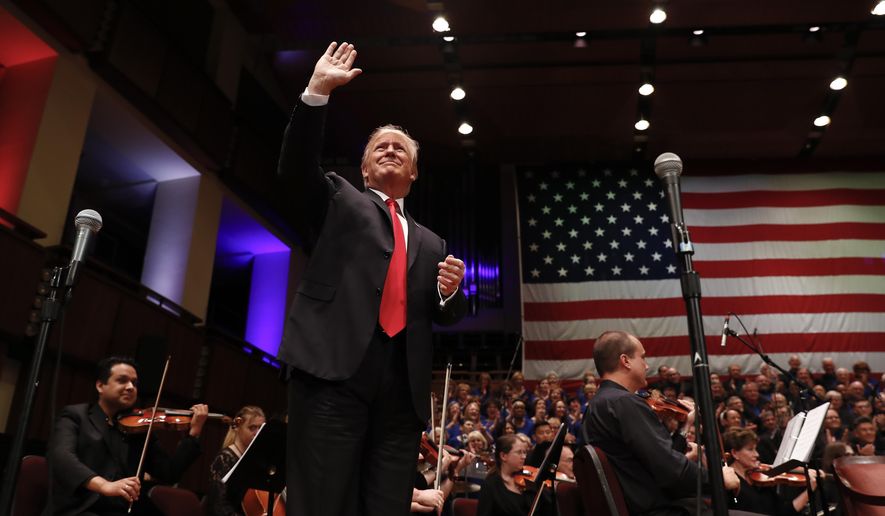President Trump’s promise to build a border wall with Mexico hasn’t stopped the peso from climbing.
After diving toward record lows following Mr. Trump’s election in November, the Mexican currency has rebounded by more than 15 percent since Mr. Trump took office in January. The unexpected jump through the first half of 2017 comes despite Mr. Trump’s tough talk on immigration, NAFTA and border security with the U.S.’ third-largest goods trading partner.
The peso’s unexpected strength comes as investors and analysts sense a softening of Mr. Trump’s actual policy toward the North American Free Trade Agreement and relations with Mexico in general, said Matt Gold, a former deputy assistant U.S. trade representative for North America who now teaches law at Fordham University.
“Trump’s campaign rhetoric significantly contributed to the dramatic decline in the peso against the dollar,” Mr. Gold said. “I think the change in rhetoric and NAFTA renegotiation talks have significantly contributed to its rebound against the dollar.”
Mr. Trump repeatedly called NAFTA “the worst trade deal in the history of the world” and threatened to withdraw from it completely within days of taking office. He also repeatedly promised to build a wall on the U.S.-Mexico border to control illegal immigration.
But instead of killing NAFTA, Mr. Trump agreed at the last moment to renegotiate it, with talks to begin in August. And six months into his presidency, construction on a border wall has not even begun.
Mexico’s domestic economy has also weathered the Trump shock, growing at an annual rate of 2.7 percent in the first quarter. Mexico’s central bank has pushed interest rates up to 7 percent, the highest level in eight years and another factor in the peso’s rise in international currency.
Fears of a trade war, analysts said, appear to be greatly overblown, and those who were bearish on Mexico are now reassessing. The peso, in fact, is now 3 percent higher than it was before Mr. Trump’s election in November.
“NAFTA really does seem to be back on course,” said Duncan Wood, director of the Mexico Institute at the Wilson Center, noting that the trade deal seems set to be modernized, not abolished. “Because of that, we’re seeing investment flowing to Mexico.”
The stronger peso — the dollar was pegged at 21.57 pesos when Mr. Trump took office, compared to 18.22 pesos Monday — could actually be a boon to Mr. Trump’s quest to lower the bilateral trade deficit. The currency shift makes Mexican-made products more expensive in the U.S. and American exports more competitive on price in Mexico.
“Anytime the U.S. dollar goes down in value against foreign currencies, we’re able to export better,” Mr. Gold said. “This has a big impact on our trade balance.”
With goods and services trade between the two countries totaling nearly $600 billion in 2016, according to the USTR, the two nations’ economies are deeply intertwined. Although the government of President Enrique Pena Nieto has reached out to new partners and markets such as China, Mexico’s growth depends on the growth of the U.S. economy because it manufactures so many inputs of U.S. goods, Mr. Wood said.
Mexico was the U.S.’ second-largest goods export market in 2016, primarily importing U.S. machinery, vehicles, fuels, plastics and agricultural products. Mexico also exported billions of dollars of vehicles, machinery, medical instruments and agricultural products to the U.S.
Mr. Gold also emphasized the importance of Mexico’s stability for U.S. national security.
“The cost of having a contiguous nation that is unstable can be staggering,” he said.
Indeed, the peso’s rise comes in the face not only of possible negative policy shifts in Washington but growing violence and political unrest domestically. But Mr. Wood said Mexico’s manufacturing industry has become so strong that political issues don’t significantly harm the economy.
Though Mr. Gold said he is optimistic that the peso will stay strong against the dollar, Mr. Wood said the peso may decline again when campaigns begin for next year’s presidential election in Mexico. Even if it declines then, Mr. Wood said, it will probably go back up — despite frequent dips, the peso has been on an upward trend for the past several years.
“Though it may slip in the next year, what we’re seeing is very much consistent with that pattern,” he said.




Please read our comment policy before commenting.